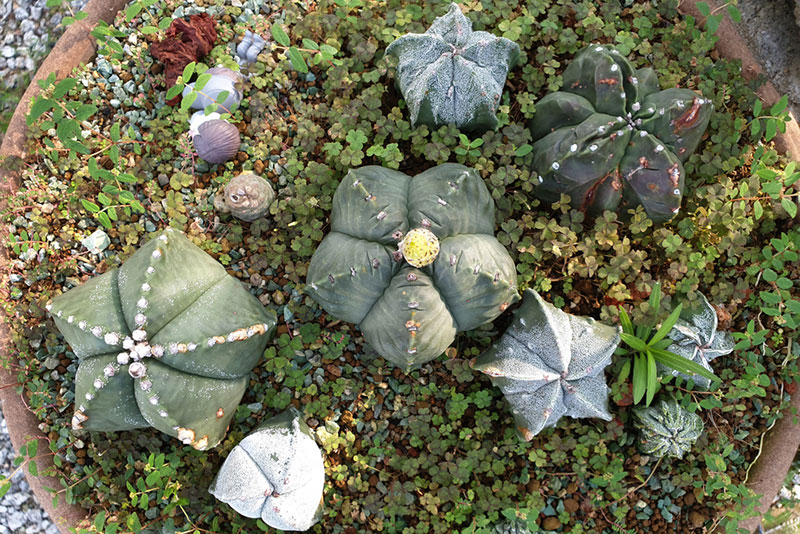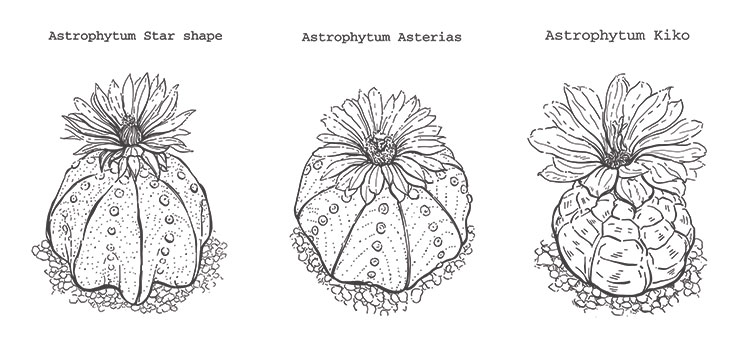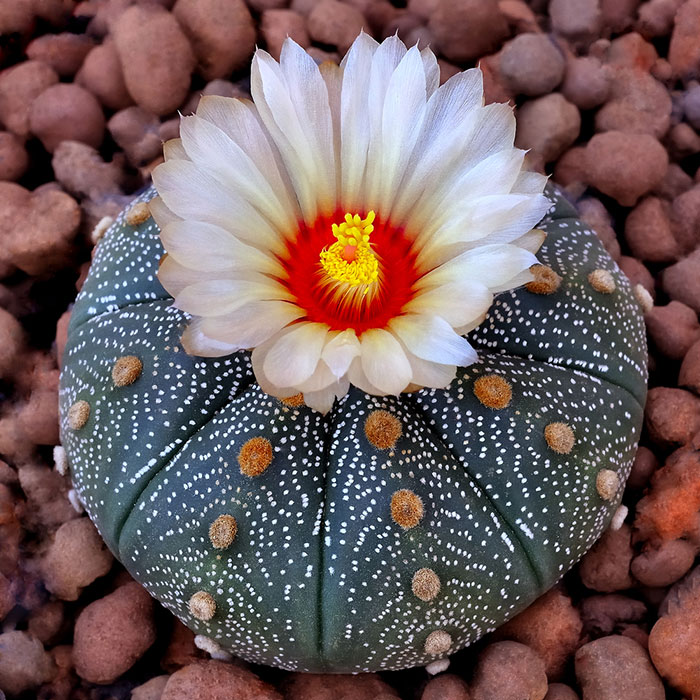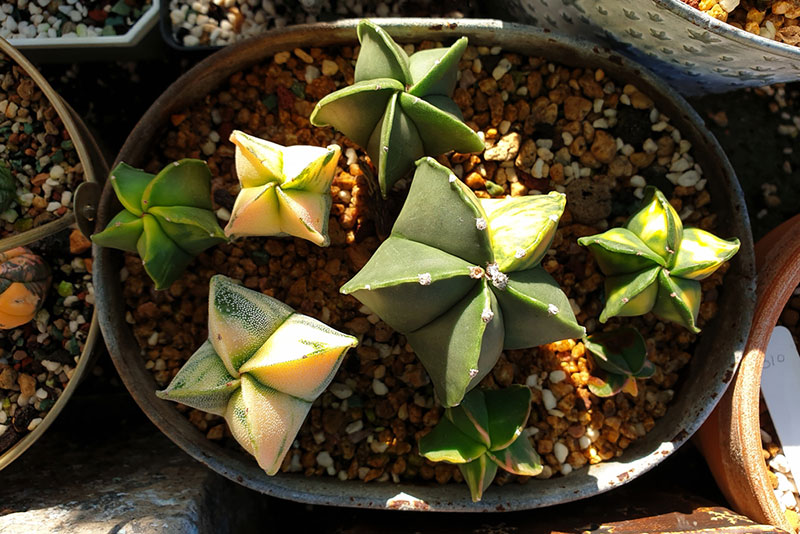
The adorable little star cactus earns its name from its spineless body that resembles the shape of a star. The greenish-gray cactus features ridges of tiny white dots further outlining the star shape which is best observed from above.
Star cactus grow to 2 to 6 inches in height with an equal width. It produces a bright yellow, 3-inch blooms in the spring. The flowers transform to gray, red or pink berries covered in wooly hairs. It is hardy in USDA plant hardiness zones 8 and 9, but can be grown as a houseplant in cooler regions.

Light and Temperature Requirements
The star cactus is a tender perennial that can be grown in USDA plant hardiness zones 8 and 9, but it will not survive the winter in cooler regions. They prefer temperatures above 70 degrees and will tolerate temperatures that as low as 20 degrees for a short period without damage.
It prefers full sun for 6 to 8 hours a day, but can be grown on a sunny windowsill inside the home.
Watering
As cacti go, the star cactus prefers more water than most, but it still needs soil that drains well and dries out between waterings. Soak the soil and then allow it to dry out before watering it again. Generally, the star cactus needs watering once a month during periods of growth. Water less frequently during the winter months.
Avoid placing your star cactus in locations with high humidity. Although they can tolerate the average humidity in your home, excess humidity from the bathroom or other appliances can cause a problem. Use a dehumidifier if humidity levels are high in your home.
Soil & Fertilizing
Like other cacti, the star cactus needs sandy, well drained soil to thrive. Plant them in commercial cactus soil mix or make your own by mixing equal parts all-purpose potting soil and perlite. Some prefer to add builders sand to the mix. This makes a loose soil that provides plenty of aeration and drainage. Star cactus prefer soil that is slightly alkaline.
The star cactus benefits from monthly fertilizer during the growing season, typically from April to October. Applying water-soluble fertilizer designed for cacti when watering the plant works best. It goes dormant and rests during the winter with little or no signs of growth. Do not fertilize your star cactus during this time.

Deadheading and Pruning
Other than removing the faded blooms on the plant, star cactus do not need pruning.
Growing From Seed
Star cactus can be started from seed, either from the seeds collected from the blooms on your plant or from commercially available seeds. If you are collecting your own seeds, plant them right away as they are only viable for a short time.
- Fill a flat with cactus potting soil. Do not use all-purpose potting soil as it is too heavy for cacti.
- Sprinkle the seeds over the top of the soil. Use tweezers or moisten a toothpick to pick up and move the tiny seeds.
- Cover the seeds lightly with potting mixture.
- Mist the soil to moisten it.
- Place the tray in a plastic food storage bag or cover it with plastic wrap. This helps to hold in moisture and heat to help the seeds germinate.
- Place the tray in bright, indirect sunlight in a warm location.
- Open the bag frequently to check the moisture level of the soil. If the inside of the bag remains foggy, leave it open to allow for air circulation and to release excess moisture. The potting mixture should be moist but not soggy.
- Keep the soil moist by misting the soil when needed.
- Remove the plastic cover once the seeds germinate and move them to a sunny location.
- Keep the soil moist until the new plants are 1/2 inch tall.
- Transplant the seedlings to individual pots and gradually move them to direct sunlight.
Repotting Star Cactus
Star cactus benefit from regular repotting about once a year. The best time to repot them is in the spring when they begin active growth.
- Choose a new plant pot one size larger than the current pot.
- Fill it with fresh cactus soil and make shallow hole for the plant.
- Remove the star cactus from its current pot and settle the roots gently into the new pot.
- Back fill around the roots of the star cactus with fresh soil to secure it in place.
- Water to moisten the soil.
- Resume normal care, but avoid fertilizing the plant until it has adjusted to its new home.
Star cactus is considered a threatened species in the wild as it has been heavily collected for retail sales. Always buy your star cactus plants from a reputable supplier as they have grown them from seed and do not harvest them from the wild.





